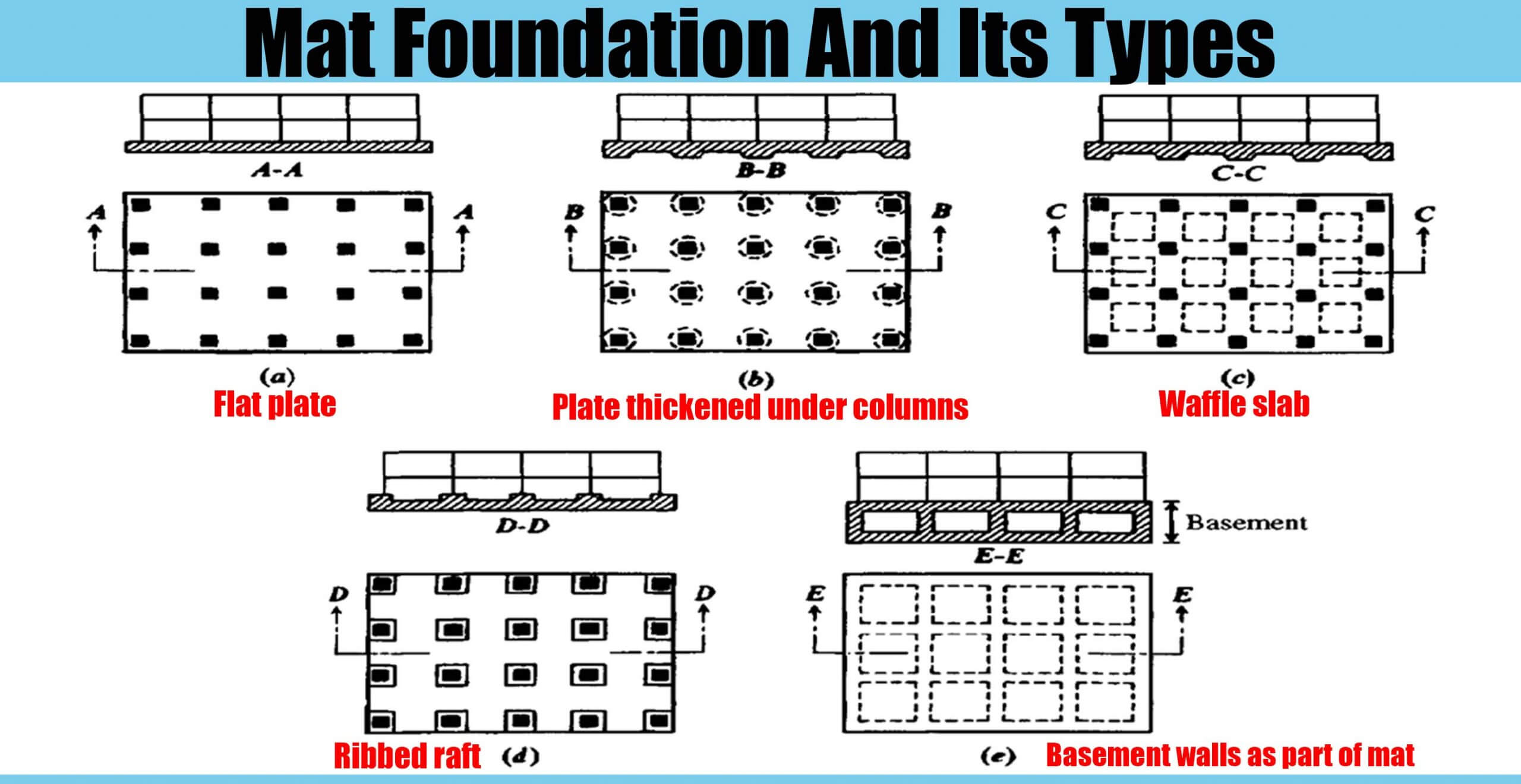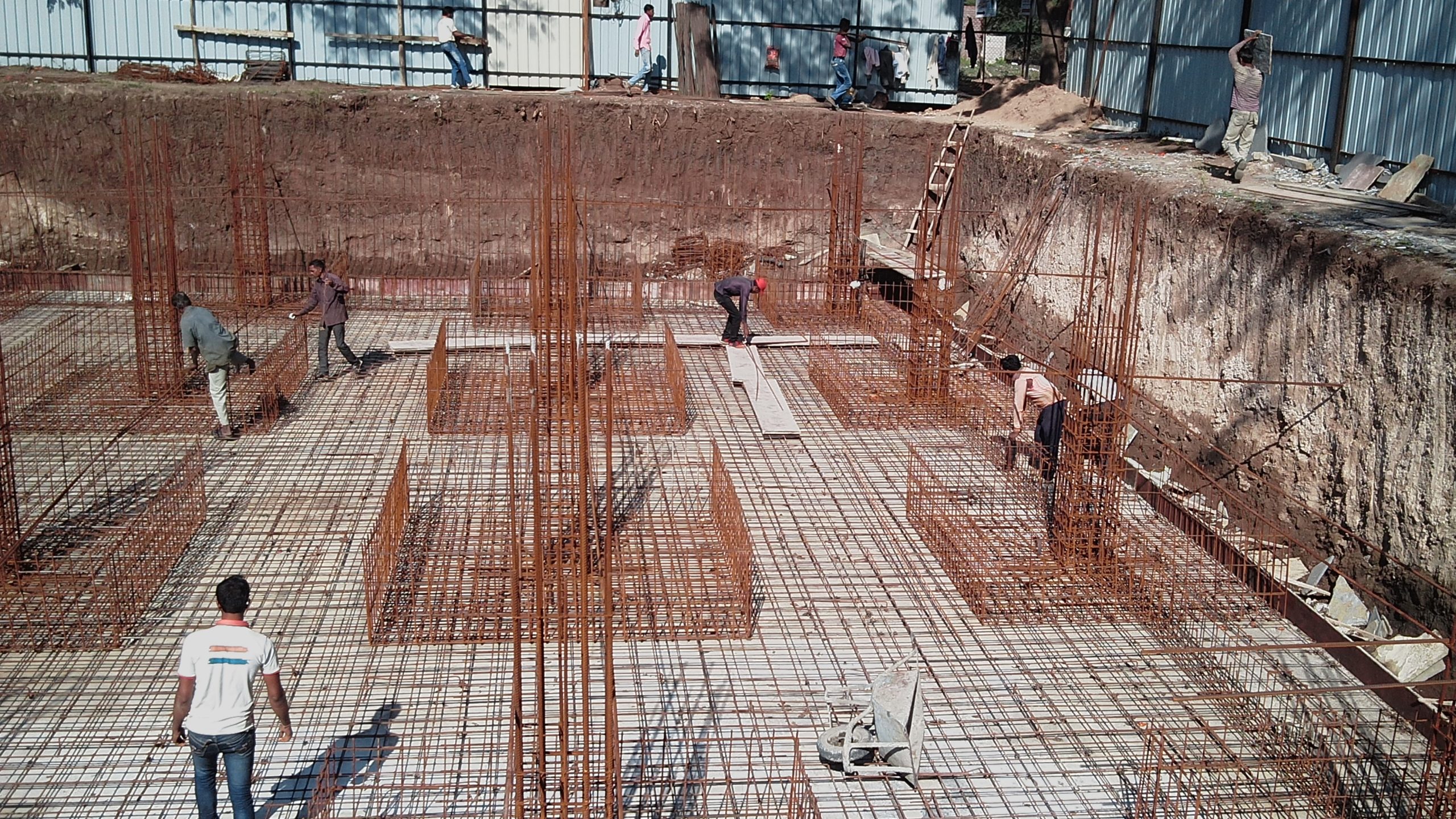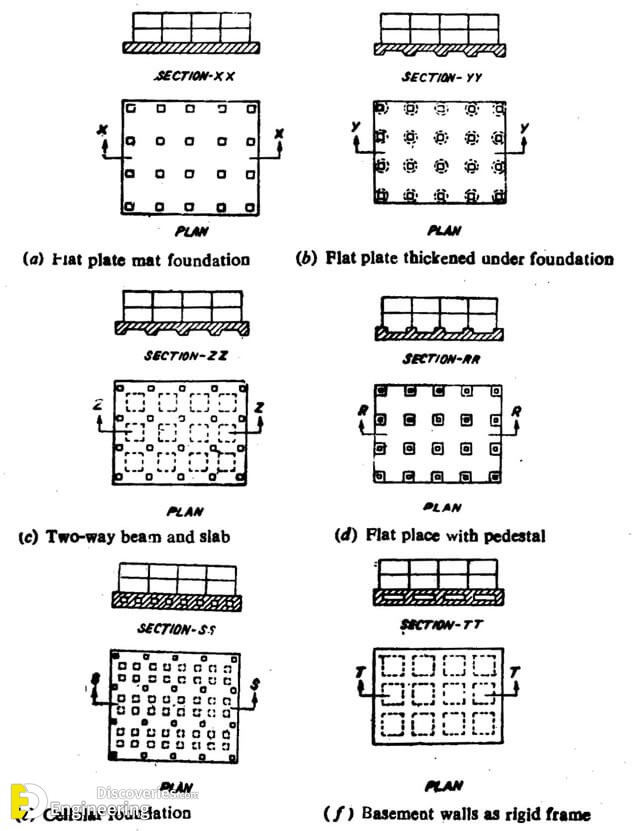Mat foundation is otherwise called as Raft Foundation and its working principle is similar to a shallow foundation. Mat foundation is preferred for large space where separate footings are not possible to construct due to overlapping condition. Generally, Mat foundation’s footing will extend over a large area. The main reason why the Mat adopted by most Engineers is Mat will distribute loads equally to prohibit differential settlement. Mat is considered when the soil condition is so poor and weak.
There is no major difference between the mat and raft foundations, both are the same. It is a basic concept of stress in civil engineering. Weight divided by per unit area is called stress. E.g. if a building measuring 10 m x 7 m and weight on it is 130 Tons so the result,
Stress = Weight / Area = 130 / 70 = 1.85 tons weight per m2.
This foundation is very useful for basement structures. A waterproof membrane sheet is placed over the ground surface and then 4″ PCC is poured to create a level base for the Mat/raft foundation. After the PCC, reinforcement steel bars are tied (cage) in place and then the desired thickness of the concrete(According to the design) is poured.
2- A column is placed near to the property line and walls are so close that individual footing would overlap.
3- If the cost of a deep foundation (Pile foundation) is higher than the raft foundation we use to make the structure economical.
4- When a spread footing columns can cover up to 50% of the foundation area.
Types of Mat Foundation
1- Flat plate mat
2- Plate thickened under columns
3- Two-way beam and slab
4- Plate with pedestal
5- Rigid frame mat
6- Piled raft




